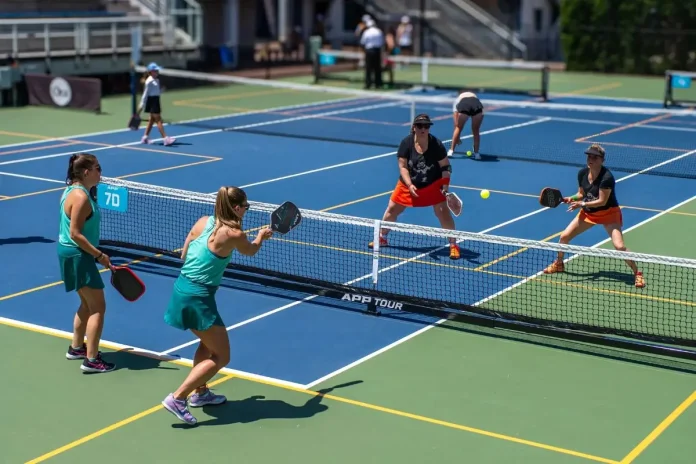Pickleball Paddle Angle Techniques: Pickleball Daily instructor Spencer shared a complete guide on how the angle of a paddle affects the height, spin, and direction of a shot. His lesson covered wrist control, grip strength, and drills to help players keep their paddle steady, create space on the court, and consistently find the sweet spot for volleys, forehands, and backhands.
Wrist Position Controls Paddle Angle
Spencer explained that the wrist is the key to controlling the paddle face. Keeping the wrist tilted back allows the paddle tip to point down at contact, helping keep shots low and steady. If the wrist drops or tilts forward, the paddle face opens too much, sending the ball too high and giving opponents an easy attack.
Creating Topspin and Backspin
Topspin in pickleball comes from a slightly closed paddle face with a low-to-high swing. Players brush upward on the ball to create the upward spin that makes it dip back into the court. Backspin requires an open paddle face with a high-to-low motion. This slice shot works best in the kitchen or middle of the court where the ball stays low and hard to attack.
Adjusting Paddle Angle for Volleys
When volleying, keeping the paddle face toward the opponent increases the strike zone and improves timing. A shorter backswing and compact follow-through provide more control than a long swing. Players should angle the paddle tip up when the ball is above the net and tip it slightly down when the ball is below the net to guide the shot safely.

Stable Grip for Better Accuracy
A grip that is too loose makes the paddle face wobble and reduces accuracy. Spencer recommended holding the paddle with moderate strength—around a three or four on a ten-point scale—to keep the wrist steady while still allowing quick adjustments. This balance keeps the ball low and prevents unforced errors.
Groundstroke and Backhand Control
For both forehand and backhand groundstrokes, the paddle tip should point slightly down with contact in front of the body. A sideways or upward paddle tip can cause the ball to float too high. On the backhand, pointing the tip down ensures a forward-facing paddle and a clean, low shot that stays out of an opponent’s attack range.
Drills to Build Consistency
Spencer suggested three drills to sharpen paddle angle. First, work with a partner at the kitchen line to practice short punch volleys with a closed paddle face. Second, set up targets on the court and use the wrist to aim while standing still. Third, hit against a wall from seven to ten feet away, keeping the ball low and maintaining a steady wrist rhythm.
Why Paddle Angle Matters
Correct paddle angle helps players control shot height, create spin, and stay consistent during rallies. It also reduces the risk of giving opponents easy put-away opportunities. With steady practice, these techniques can improve precision, add variety to shots, and increase overall confidence during competitive play.
News in Brief: Pickleball Paddle Angle Techniques
Spencer of Pickleball Daily explained how paddle angle controls shot height, spin, and direction. Key tips include steady wrist positioning, moderate grip strength, and drills for volleys and groundstrokes. Using proper angles for topspin, backspin, and volleys helps players keep the ball low, improve accuracy, and consistently hit the sweet spot.
ALSO READ: Unlock Game-Changing Power: 5 Expert Tips to Transform Your Pickleball Drive

